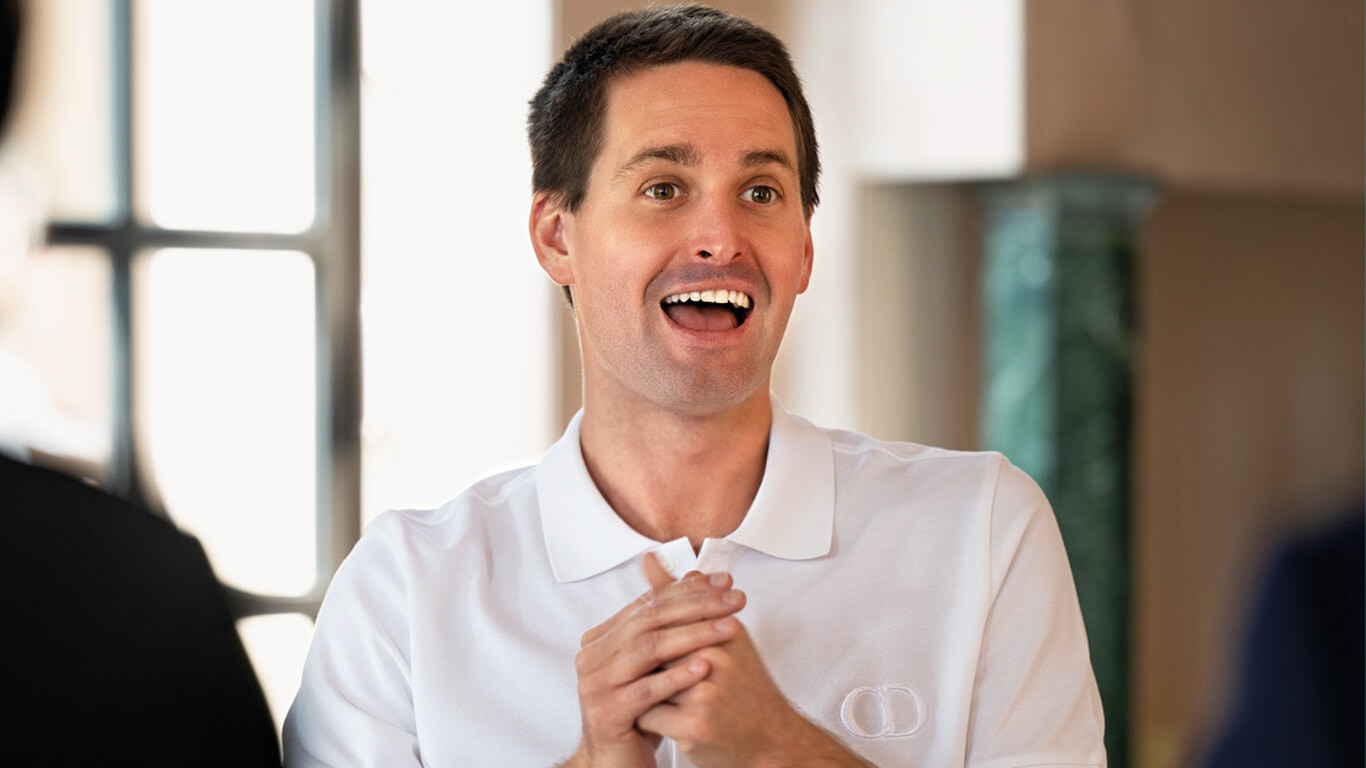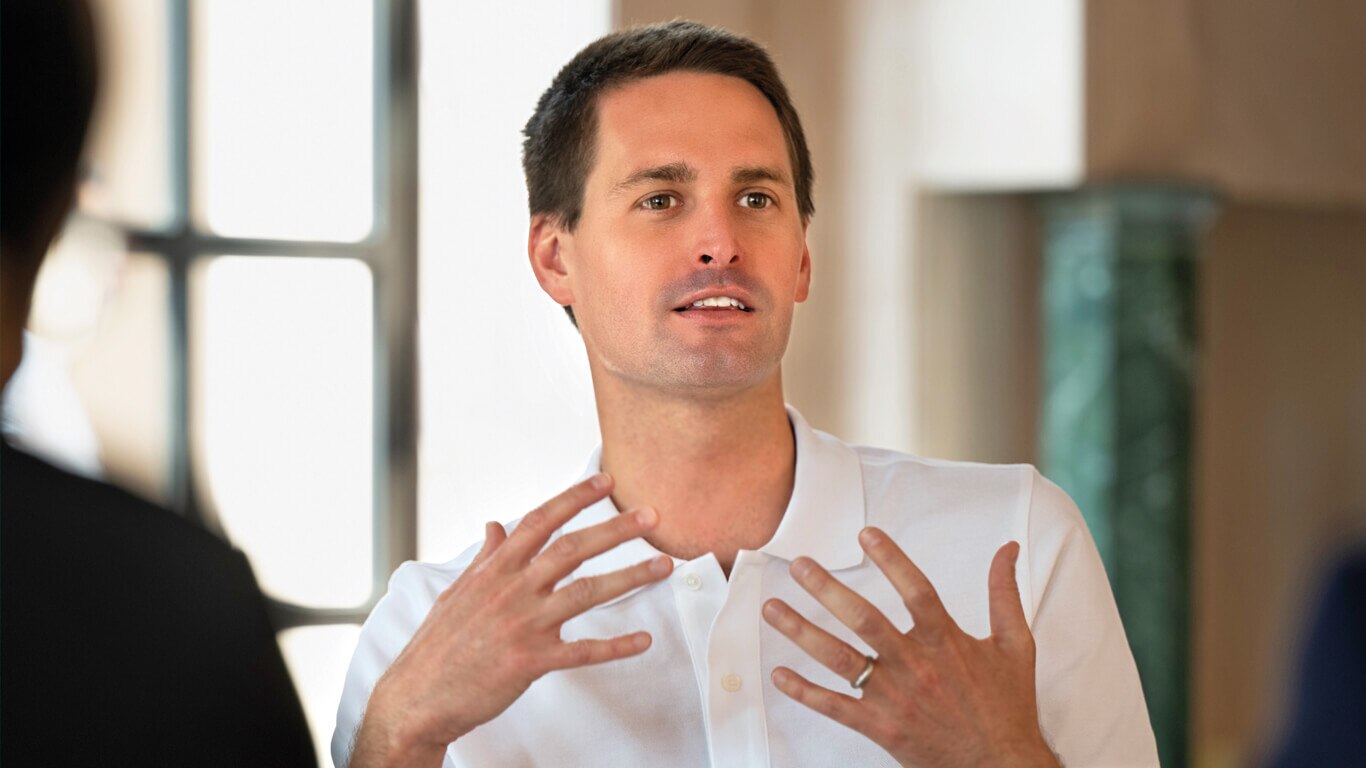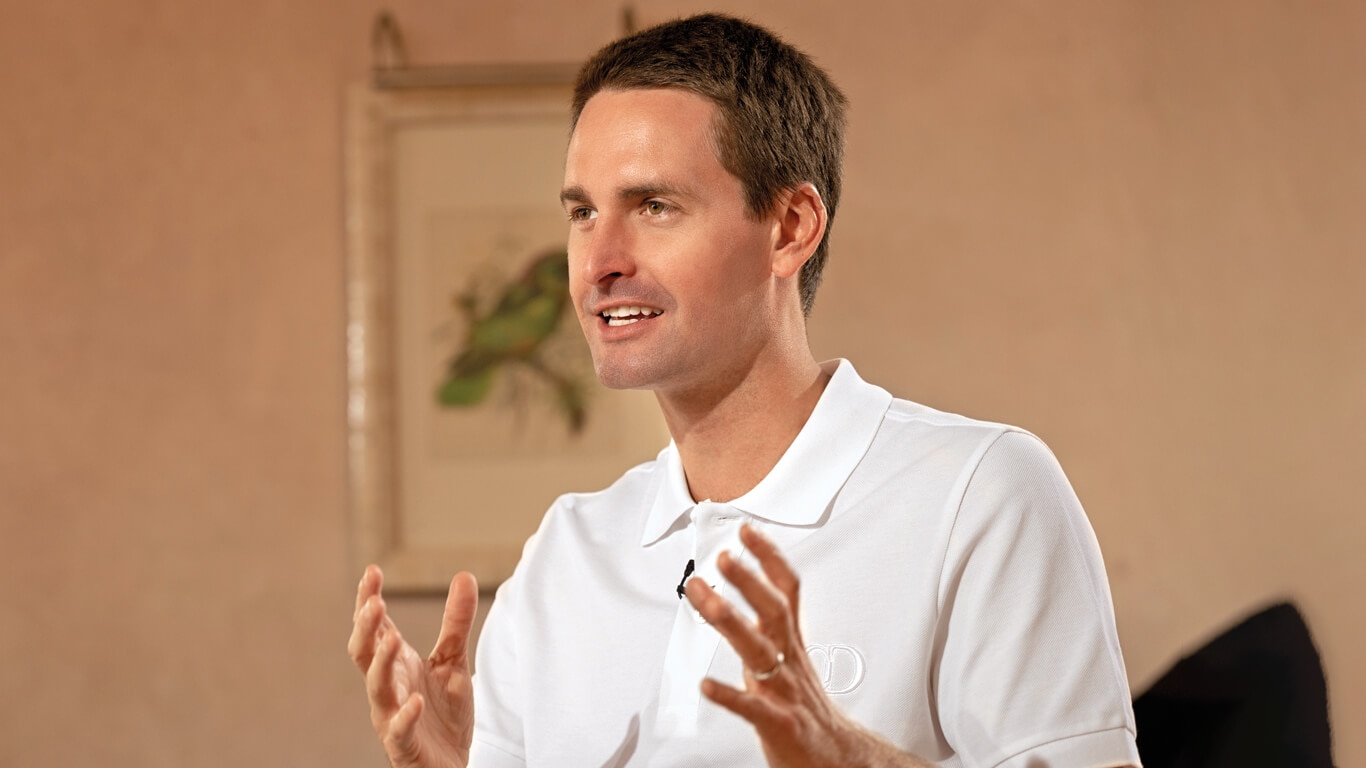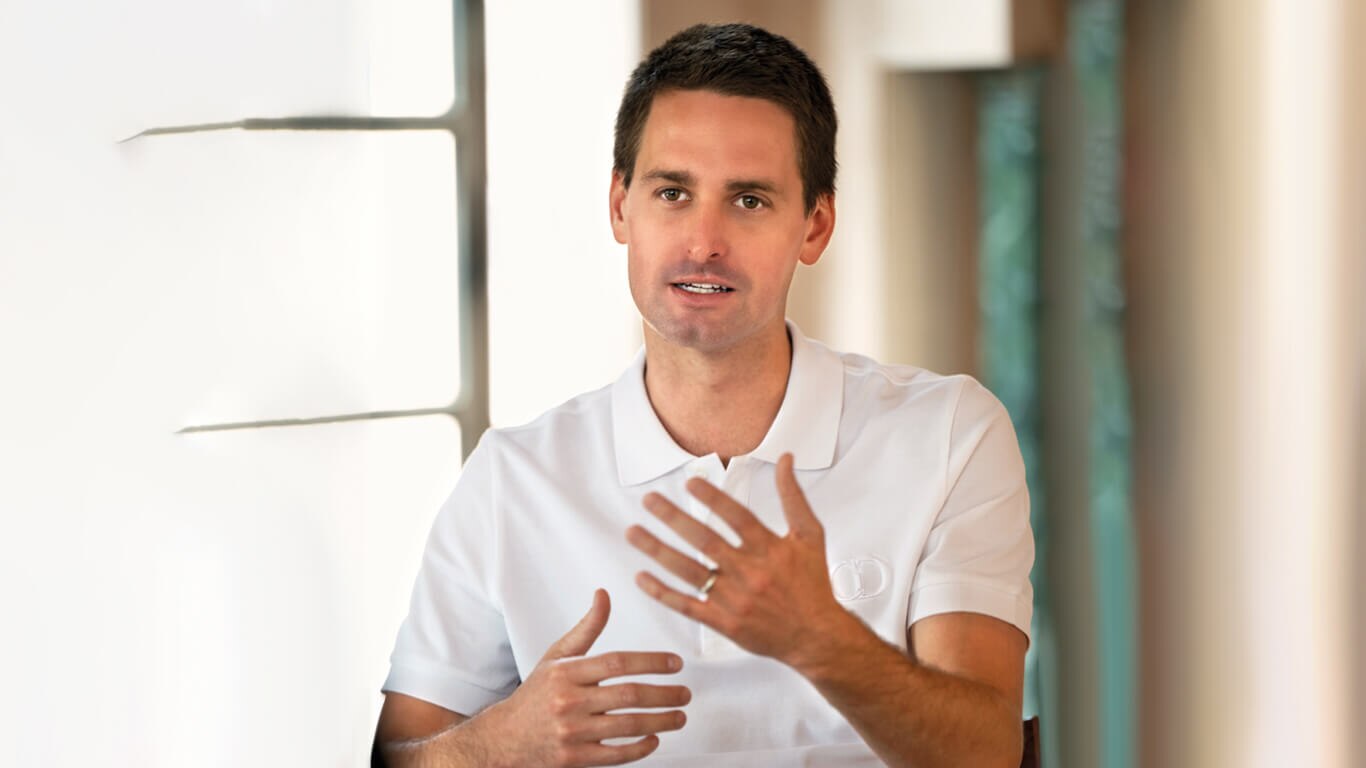
We don't support landscape mode yet. Please go back to portrait mode for the best experience
Evan Spiegel, Co-founder & CEO of social media firm Snap, talks about advertising, profitability, and the India story
(Photos: Bandeep Singh)

In his white Celine shoes, Evan Spiegel looks every bit the successful young entrepreneur that he is. The 33-year-old Co-founder & CEO of the $4.6-billion Snap Inc. doesn’t pull any punches. Having made a name with the multimedia messaging app, his firm is now focussing on India. On a recent visit to India, Spiegel took time out to speak to Business Today’s Sourav Majumdar and Krishna Gopalan on AI, privacy, AR vs VR, and the road ahead. Edited excerpts:
A: The Snapchat community is growing and we have over 200 million users in India. I understand that’s still a small number. So, I am excited about the opportunity and just seeing the way young people are expressing themselves through augmented reality (AR) experiences. We have connected with developers who are making so many new AR experiences. And of course, there are folks who are creating videos, sharing them with their friends, expressing themselves and communicating with Snapchat. I like the way our product is resonating here in India. It is a great honour to be here and to connect with our community.

A: We have seen Snapchat grow historically around the world. It’s always been about friends and family connecting. We know that a picture’s worth a thousand words. That means you can share what you’re doing and who you’re with visually, through Snapchat with photos and videos. That, with all the AR lenses, is really what brings people together and helps our service grow.
To me, it’s been so much fun to see a vast number of people in India using our service to connect with one another.
A: AI is such a powerful, creative tool. We all imagined in our own heads what we wanted to create or share. But building it or drawing it or designing it ourselves is very challenging... one can use AI to shorten the distance between what you can imagine in your mind and what you can create on your phone. Even in the future, AR glasses... hold enormous potential. AI is going to be an empowering, creative tool for humanity.
“The Snapchat community is growing and we have over 200 million users in India... I am excited about the opportunity and just seeing the way young people are expressing themselves through AR experiences”

A: With the explosion in content creation being powered by AI, it’s becoming even more important to authenticate real news; that’s why we have a closed content platform on Snapchat. That means we decide the publishers who can be on our platform and we make sure that the content adheres to our content guidelines. Today, we should assume that more of the content we see has been created by AI... It’s very important to authenticate real news.
A: Performance advertising is an essential part of any business strategy for growth. It allows people to reach their customers in a personalised way with the assistance of AI and it’s a more efficient way to reach out to customers. Businesses are achieving incredible growth in a way that wasn’t possible before with brand advertising, that wasn’t as personalised... this explosion is helping smaller businesses compete in a way that they never could before since they could not advertise at scale... Performance advertising has been a vital tool for small businesses to achieve their goals and that is one of the reasons why it’s so exciting to be expanding our advertising offering here in India.
I think it’s been great because globally we’ve had an opportunity to learn from Facebook and Google, and see how they’ve operated their platform to drive those results. What is challenging is that we’re a much smaller company and being able to drive comparable results takes a lot of hard work from our engineering and product teams. That is an area where we’ve had to really invest and stay focussed.

A: When Bobby (Bobby Murphy, Co-founder & CTO) and I first started working on Snapchat, we wanted to make something that was different. There was a lot of pressure on social media because everything is posted forever and it’s public, with likes and comments. So, social media feels like a popularity contest, where you need to look pretty or cool or perfect to get attention. Bobby and I just wanted a way to communicate and have fun together with our friends.
When we built Snapchat, we opened it to the camera but we also made sure that there weren’t public likes and comments and that the content just goes away. That meant people feel comfortable reinventing themselves... We don’t record every conversation we have with our friends when we’re hanging out with them. Therefore, making conversation online, and more similar to real world conversation, is one of the reasons why people love Snapchat.
A: When we started working on Snapchat, now almost 13 years ago, people were just discovering social media but didn’t realise how much it had impacted their lives or made them uncomfortable communicating with their friends or with the world. But now that people all over the world have tried social media, they want something different and it’s a really good time for Snapchat to show people that there’s a better way to communicate with friends and family without all that pressure.
A: The most important thing to our business is serving our community. As long as that grows, we think we can build a very big business over time. We just passed 400 million daily active users around the world and there is engagement in content and augmented reality and with our app. That gives me a lot of confidence in our ability to continue to grow revenue and develop our business over time. But as you pointed out, it’s going to be increasingly important for our business to deliver results with our performance advertising platform, since we need to attract advertisers’ spends. Now we have a product that can perform for advertisers and it helps us to weather some of the volatility and the challenges since we can drive measurable results in a scaleable way for advertisers.

A: There is some tension there but that’s also where the innovation lies. And that, to me, is what’s so exciting that we don’t need to trade off privacy for great business performance. We can innovate and come up with new ways to help advertisers reach the customers, without sacrificing the privacy of the people that use our service. As we’ve worked on things like aggregated data and ML modelling, we’ve been able to find ways to help advertisers who have achieved their performance goals without leaking privacy-safe information from our community.
Take the case of AR for advertisers. That’s another big opportunity for us, especially because so many people love using our camera to share and express themselves with brands. Plus, brands find that when people engage with their AR tools, and they share the AR effects with their friends, that can help drive business results for them as well.
A: When we think about building our business over the long term, we just see an enormous opportunity to continue growing our community and growing our revenue. So far, we’ve made the decision to run our business right about at break-even and continue to reinvest so that we can make great new products that our community loves. We want to continue to reach more people and invest in our app platform to drive more performance for advertisers. And so as long as we continue to see that really big long-term opportunity, we will want to carefully balance profitability, so that we don’t optimise around short-term profits over the long-term growth in our business.
In terms of what lies ahead, we’re bringing ML tools into Lens Studio, which is our developer environment that allows people to build AR lenses. A lot of these AI-assisted tools will help people build high-quality lenses faster and also help generate some of the 3D assets necessary to build an amazing AR experience. Historically, 3D assets have been really hard to build and AI can help build those faster.
“It’s always been about friends and family connecting. We know that a picture ’s worth a thousand words. That means you can share what you ’re doing and who you ’re with visually , through Snapchat”
A: We’ve seen so much extraordinary growth here but it’s also very early. Apart from building out our team, we’re supporting content creators and developers and helping them embrace our tools. There is work being done with our own team and advertisers so that we can help folks continue to grow their businesses here in India by using our advertising tools. In many ways, I think we’re just building the foundation in India over the next couple of years, as we continue to grow our community and our engagement with advertisers and developers.
A: There were a couple of big moments. The first one was probably when we had maybe 10 or 15 friends using Snapchat. When Bobby and I first started working together, we built a piece of software called Future Freshman that was designed to help people apply to college. And we were very excited... we worked 18 months on this, it was very complex. And nobody used it, not even our siblings.
With Snapchat, I would sit in the back of my college classes and every now and then check the counter and see the numbers increasing from 1,000 to 2,000 to 20,000 and that was really exciting. The second big moment was probably moving out of my dad’s house, which was a very big, big step for me. He was very kind and let seven or eight of us all live in his house when we were working on the service in the early days.
A: Our investment is focussed on AR and not virtual reality (VR) because our big bet is on the real world. We believe people like the real world or being with their real friends in the real world. They don’t want to have to give up all the benefits of reality to access computing.
When I was growing up, I was really into computers, [and] I would have to go to the computer lab and couldn’t play outside with my friends. Phones have helped us take a step towards integrating computing more into our lives. But even today, you walk down the street and there are people with heads buried in this little screen. With AR and glasses, we’ll be able to share computing experiences in a way that hasn’t been possible before, and stay in our environment or in the reality that we all share and enjoy.
We’ve been working on our glasses for almost 10 years. One of the things that I enjoy about [that] is that the technology is very difficult and it makes it much harder to copy. Historically, we’ve worked on products that are easier to copy and software is one such [product]. As we push harder with our AR glasses, we’ve worked to unlock some very complex technical challenges to be able to fit all of that computing and those displays into a lightweight and wearable pair of glasses.
UI Developer : Pankaj Negi
Creative Producer : Raj Verma
Videos : Shakshi, Gaurav Khera
Photos: Bandeep Singh